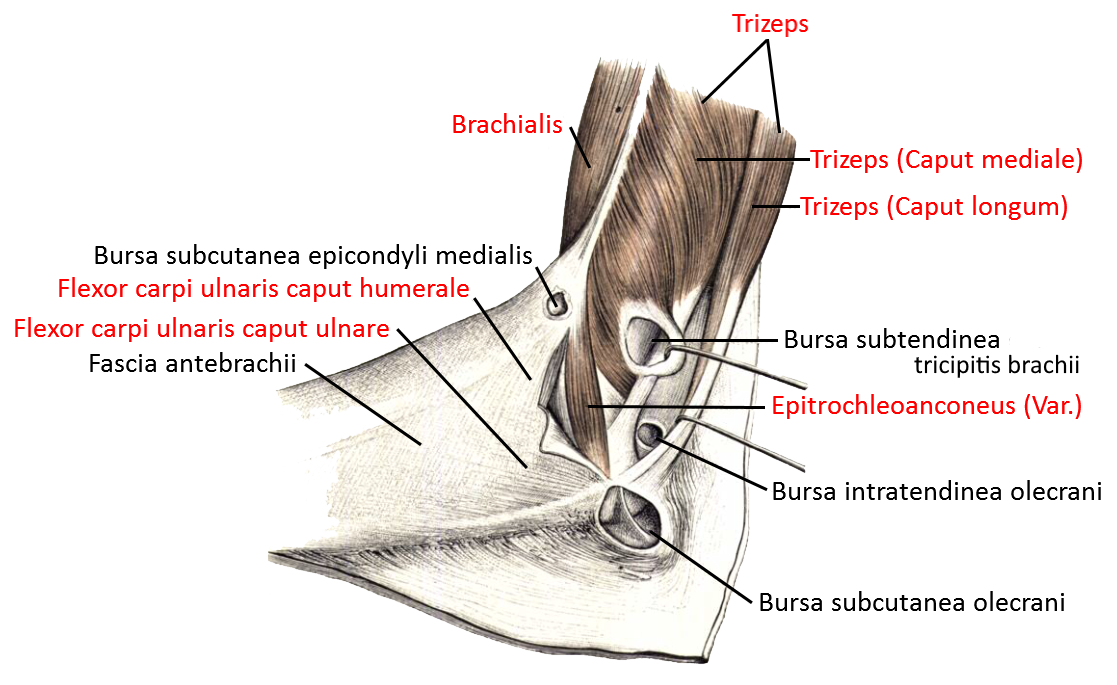yoga book / muscles / epitrochleoanconeus


Epitrochleoanconeus
The epitrochleoanconeus or anconeoepitrochlearis is an inconstant accessory muscle of the elbow joint, which can be regarded as a muscular expression of the Osborne ligament (also: cubital retinaculum, ligament of Osborne, cubital tunnel retinaculum, Osborne’s fascia, Osborne’s ligament, arcuate ligament, tendinous arch). The ligament may be rarely absent or less common than the muscle itself. The prevalence varies between approx. 4% and 34%. It is around 18% among Western Europeans, only 6.8% among North Americans and 7.5% among Asians. The prevalence among South Americans is also lower than among Western Europeans. Gruber carried out the first extensive comparative cadaver study on various species and reported in 1867 that he found the muscle in 1/3 of the human bodies examined and found it in a total of 1/4 of the arms examined, which means that it would have occurred bilaterally in half of the cases. It is assumed that the muscle is in decline due to a decline in physical labour in working life, which would explain the lower recent figures.
It is being discussed whether the presence of this muscle is correlated with a lower tendency to cubital tunnel syndrome (sulcus ulnaris syndrome/ulnar groove syndrome) in the case of normal development, but predisposes to it in the case of hypertrophy. The cubital tunnel syndrome is the second most common nerve compression syndrome of the upper extremity after the carpal tunnel syndrome.
Since the distance between the origin at the medial epicondyle and the insertion at the olecranon is shortest when the elbow is extended and longest when the elbow joint is widely flexed, it can be considered an extremely weak synergist of the triceps, similar to the anconeus, but which lies on the lateral side of the elbow joint and runs from the lateral epicondyle of the humerus to the ulna.
If the epitrochleoanconeus is hypertrophied, cubital tunnel syndrome occurs more frequently than if it is normal or absent. The symptoms worsen with flexion of the elbow joint. Resection then regularly leads to the absence of cubital tunnel symptoms.
Origin: Epicondylus medialis humeri
attachment: Olecranon
Innervation: N. ulnaris
Movement: extrem schwach: Extension des Elbow joint, Sixherung des N. ulnaris im Sulcus ulnaris
